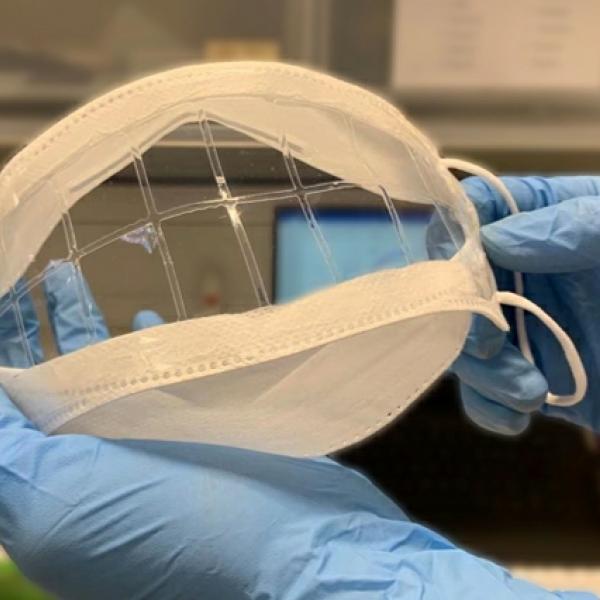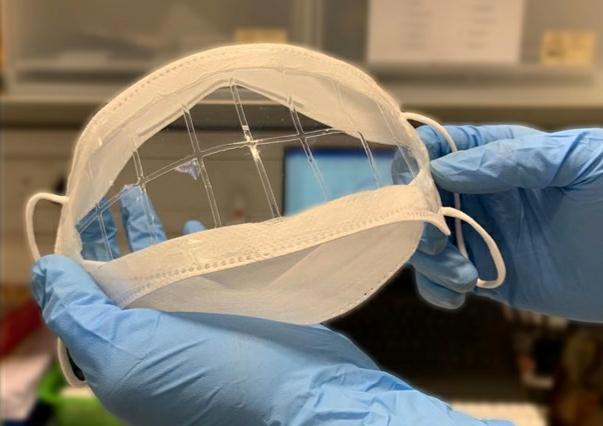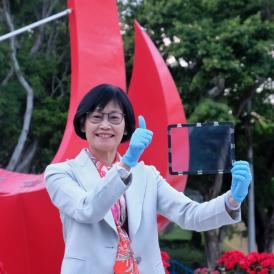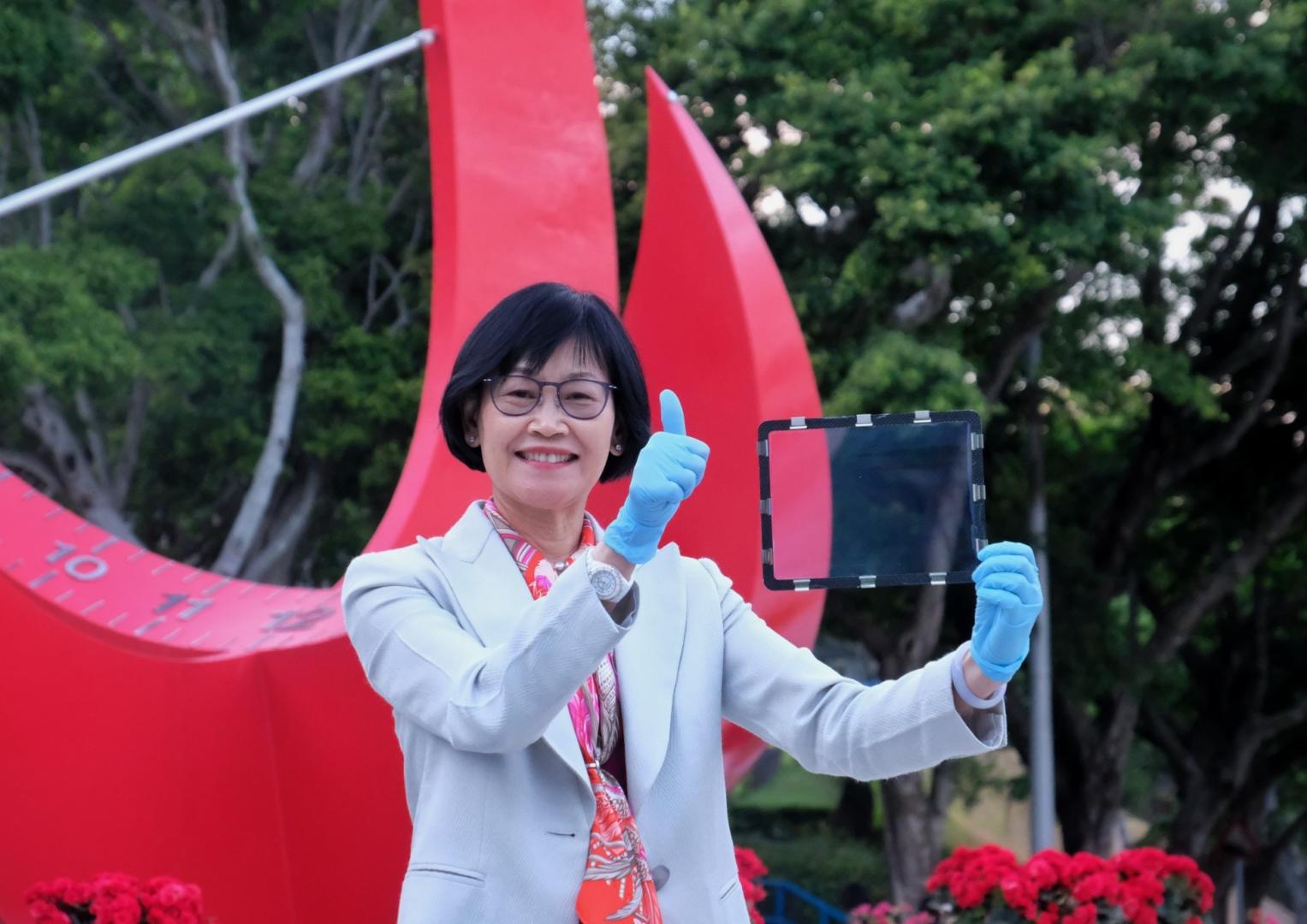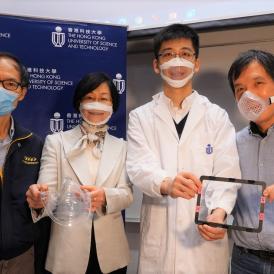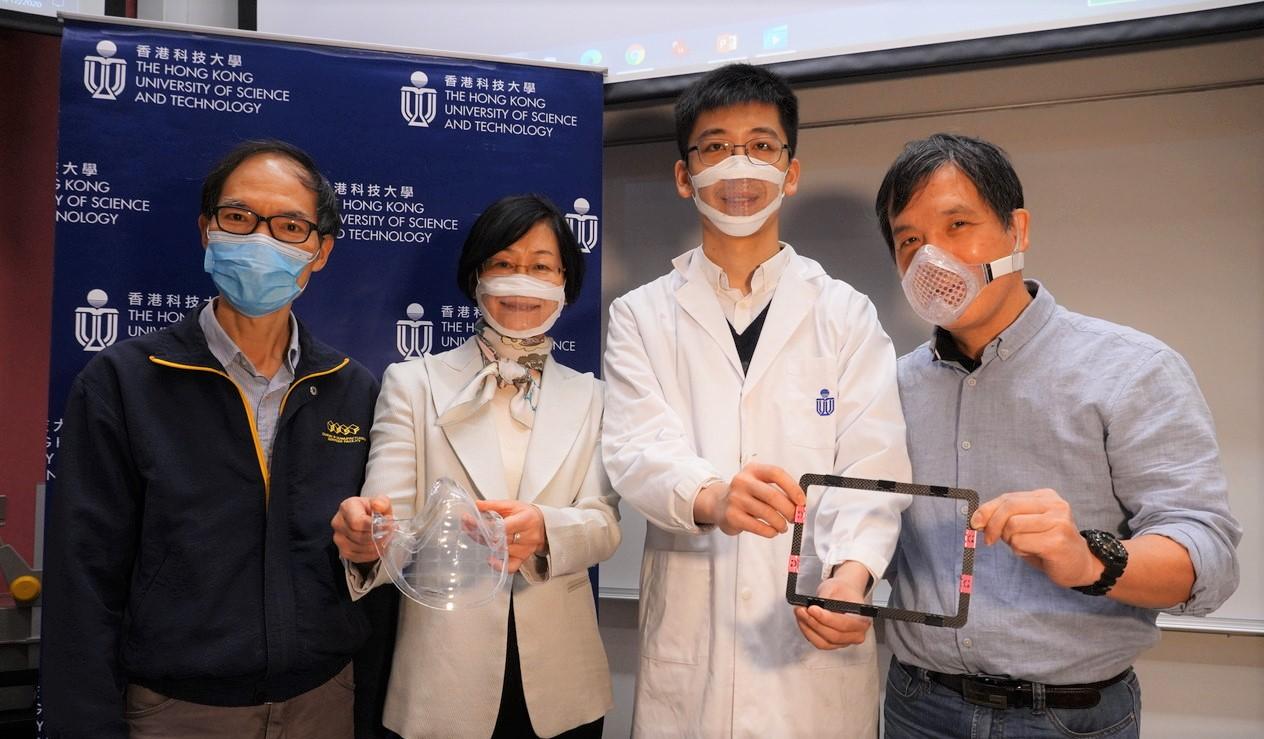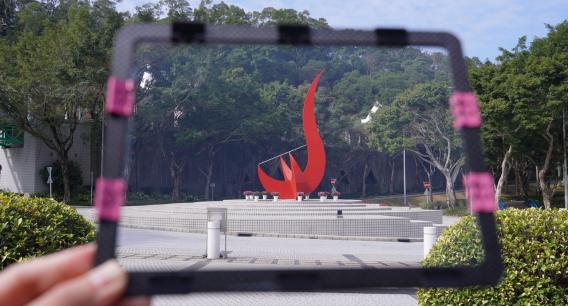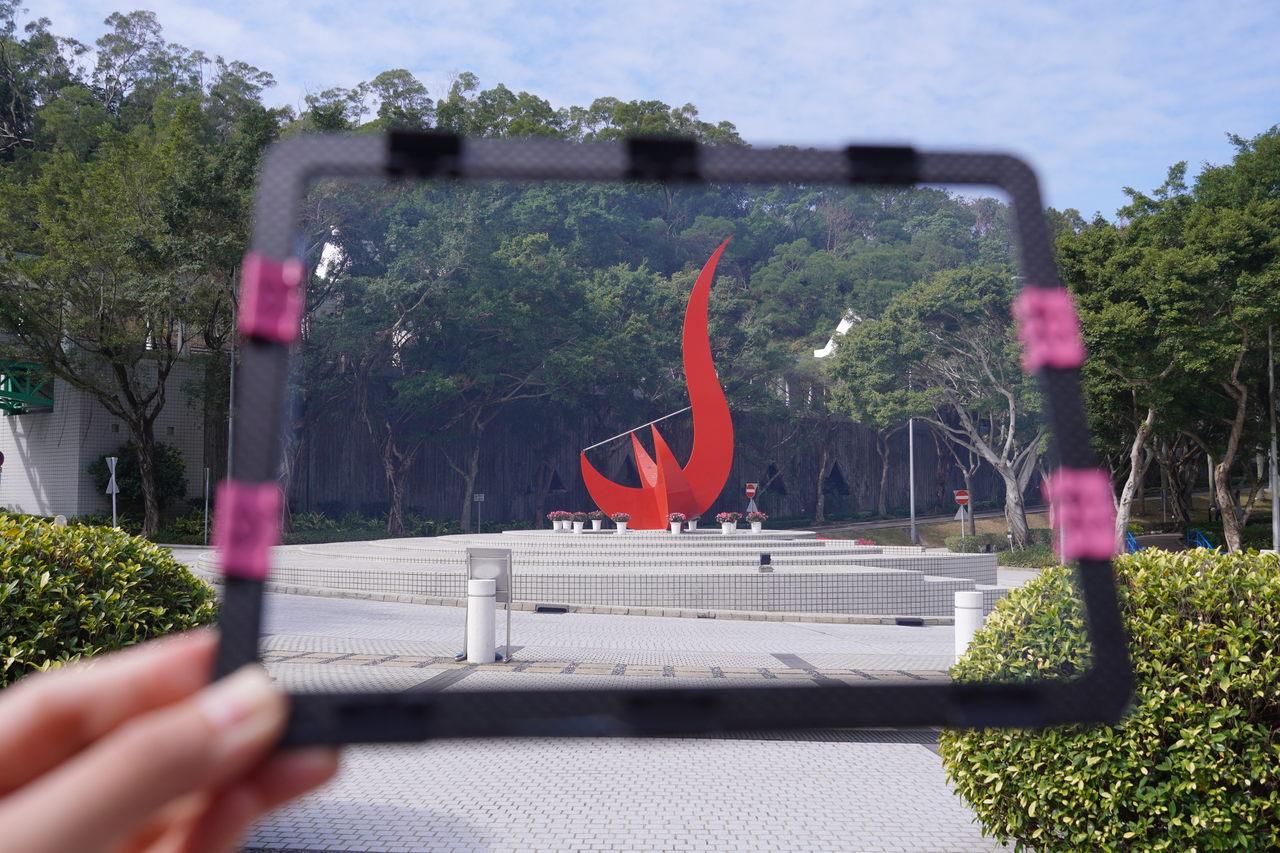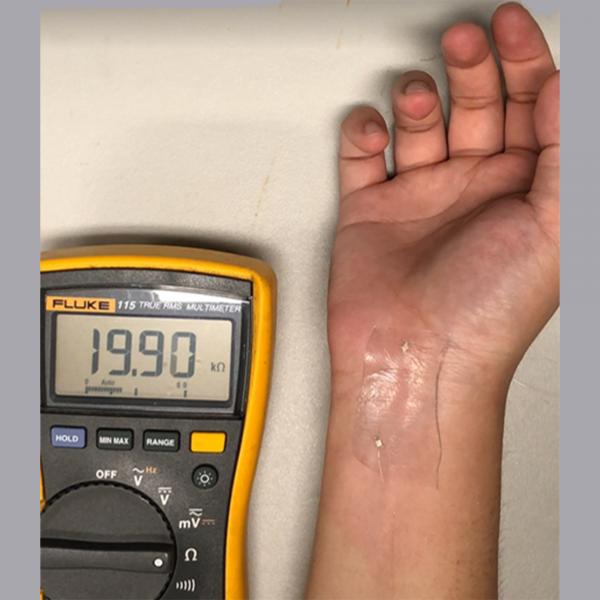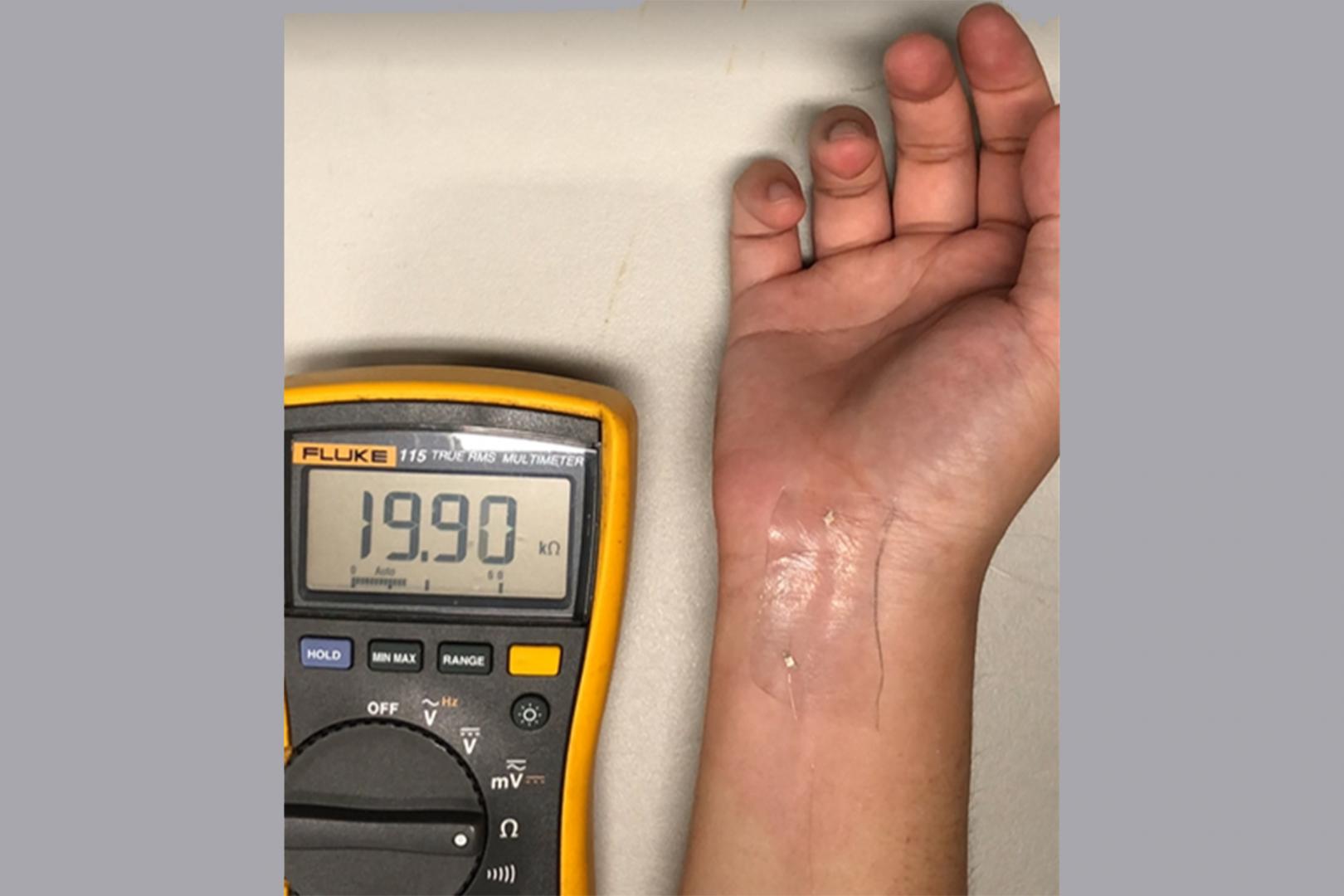Turning Garbage into the Strongest Material
While face masks keep us safe from COVID, the peace of mind such coverings offer carries a price: they conceal the friendly faces and smiles that mean so much during times of shared pain and separation.
The ongoing pandemic has inspired the ever-resourceful Prof. GAO Ping of HKUST’s Chemical and Biological Engineering Department to adapt the ultrathin polymer nanofilm she and her team had pioneered for use in transparent face masks. Helping to enhance people’s behind-the-mask communications was only half the story. Their innovative use of an already novel material will ultimately help to significantly improve people’s health and quality of life.
The Eureka! moment of inspiration
“My initial inspiration came from news reports about how mandatory mask removal for travelers’ at border control checks was increasing the risk of viral transmission,” Prof. Gao says. The “Eureka moment” eventually resulted in her creation of a game-changing idea.
An internationally respected authority in the area of materials science, Pro. Gao needed to look no further than her cutting-edge nanofilm to make the breakthrough. Originally devised to reduce the risk of lithium-ion battery explosions in electric vehicles and devices, the nanofilm proved equally ideal when used as the basis for breathable, transparent, and virus-proof face coverings. “At that time, I didn’t see one in the market that bears all three properties,” the professor adds.
Some 25 times stronger than stainless steel of the same mass, the polymer nanofilm Prof. Gao and her colleagues harness in their transparent masks is made of a premium grade plastic called ultra-high-molecular-weight polyethylene (UHMWPE). Widely considered to be the world’s strongest material, UHMWPE is usually found in costly specialist products such as bulletproof vests and total joint replacements.
Paradoxically, polyethylene’s low-density counterpart has a range of mass-produced applications spanning everything from plastic bags and water bottles to computer components and tubing. Prof. Gao neatly sums her thoughts about working with polyethylene as being “like digging gold out of the garbage,” and, for her, that is exactly the challenging and interesting spot.
The magic that turns garbage to gold lies in good science, or, in technical term, processing. In the case of polyethylene, this necessitated the untangling of minute knots formed in a vulnerable polymeric chain that is several thousand times thinner than a strand of human hair. “Those unable to overcome this hurdle end up producing commercial garbage bags, while those who succeed are able to harvest the world’s strongest material,” says Prof. Gao confidently.
“As no previous reference literature on adapting the material for face masks was available, we had to break new ground and develop everything from scratch,” Prof. Gao adds.
Micro-thin, mega potential
Gratifyingly, Prof. Gao and her colleagues’ discovery has led to a functional and comfortable product. Outperforming existing merely translucent and suffocating alternatives, their transparent masks fully filtered 99% of airborne viruses, bacteria, and particulate matter. Best of all, their innovation’s comparatively low-pressure drop also made it much easier for wearers to breathe.
Having first started researching polyethylene when studying for her PhD at Cambridge University some three decades ago, she possesses several unique insights into the true meaning of discovery. “Discovery isn’t just measured by inventing something that wasn’t there before; it is also about transforming an existing resource into a much higher value-added substance, as demonstrated by UHMWPE. That is a major discovery because you use the same chemistry.”
Prof. Gao remarks that her masks are the inch-perfect fit for those needing to read lips or facial gestures to communicate, such as the hearing-impaired, teachers, and performers. Currently seeking to ramp up in-lab production to commercially viable levels, she says her nanofilm innovations had attracted considerable interest from manufacturers in the industry, including the Disneyland.
While resource shortages mean a mass-market roll out won’t happen overnight, Prof. Gao says she is thrilled by the huge potential her “platform material” offers. The material’s durability, water resistance, and lightweight, all make it perfect for supporting numerous inventions such as air filtration membranes, nanomaterial loudspeakers, and various energy, environment, and metamaterial uses spanning all aspects of daily life. The range of possible applications is so broad and deep that she and her team have already filed six patents for future applications.
Biomedicine remains an especially fruitful area. Early this year, Prof. Gao guided her students to develop a smart sweat sensor that tracks and analyzes user’s muscle-fatigue levels via sweat biomarker data collected from the skin. Promised to be a game changer in sports science, the smart sensor technology has won an Innovation Award at the City I&T Grand Challenge and is now being adopted by sports teams of Hong Kong Sports Institute and local universities.
“I hope my students can develop more nanofilm products that will go on to profoundly benefit users all over the world,” Prof. Gao says, her eyes glowing with excitement.
A lifelong love of polymer science
Prof. Gao may have inherited her strong sense of responsibility and dedication from her father, a senior engineer who worked at an underground coal mine. Growing up in a steelmaking city in Liaoning Province, the professor remembers how her dad often risked his life to rush to the incident sites for investigation immediately after incidents. “He was so dedicated, he never worried about danger. My memory of him waking up at night and rushing to the accident spot is still vivid.”
Convinced that developing safer and better materials can also save a lot of life, Prof. Gao chose a slightly different path and became a chemical engineer. Her passion was ignited by German chemist and 1953 Nobel Prize Winner, Hermann STAUDINGER and his pioneering theories on polymer structures. “When I first appreciated his simple elucidation of bonding in polymers, I fell in love with the area of polymer science.”
Years later, she remains at the forefront of wider efforts to bridge polymer science to the general public by creating nanomaterials people can “really feel and touch.”
While her approach to science prioritizes social benefits, Prof. Gao’s interest in art stimulates her soul with unparalleled curiosity. She loves poring over philosophical works and Chinese and Western classic poems. For her, art is way more than just nourishment for the mind after a hectic day in the classroom or laboratory.
“Many philosophers have argued there is no such thing as objective reality, so how can we as scientists seek truth so as to understand the world better?” the professor asks. “When teaching my students, I encourage them to broaden their worldview by connecting their various life learnings. For me, reading literature is an excellent way of doing this.”
Writing your own legacy
After almost three-decades at HKUST, Prof. Gao is ready to embark on the next step of her academic journey. Currently dividing her time between her professorship of HKUST’s Department of Chemical and Biological Engineering and her Acting Headship of the Advanced Materials Thrust, Function Hub at HKUST(GZ), she remains committed to cementing her team’s place at the cutting-edge of materials science. “When I retire, I want to leave a personal legacy of having helped advance original research and driven the innovation of new materials that have positively impacted the world.”
“While new inventions drive each new stage of human evolution, meeting our desire for future development demands the seamless integration of such discoveries across many other disciplines.” Focusing on cross-disciplinary areas such as functional polymer and wavefunctional metamaterials, Prof. Gao is determined that her department will one day establish itself as the finest in China and the world.
Affectionately referring to HKUST as her second home, she has every confidence she and her departmental colleagues will attain that goal. “What I most like about HKUST is the truly liberating work environment it offers faculty members, regardless of who you are. Here you can argue or complain anything without any fear, safe in the knowledge you’ll be treated just the way you are,” she says.
Such uncompromising freedom and confidence will ensure Prof. Gao’s and HKUST’s shared legacy to endure for many, many years.

